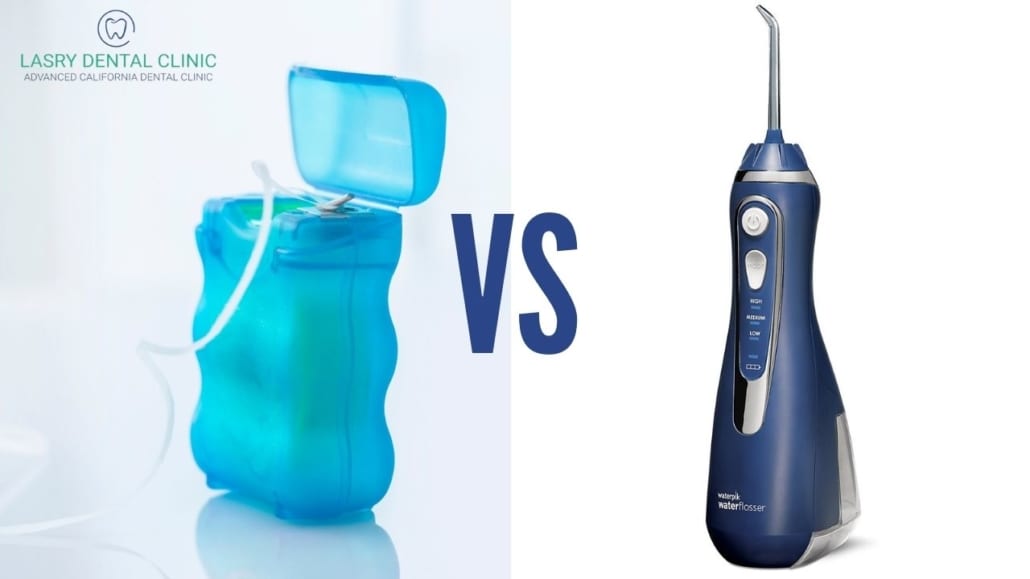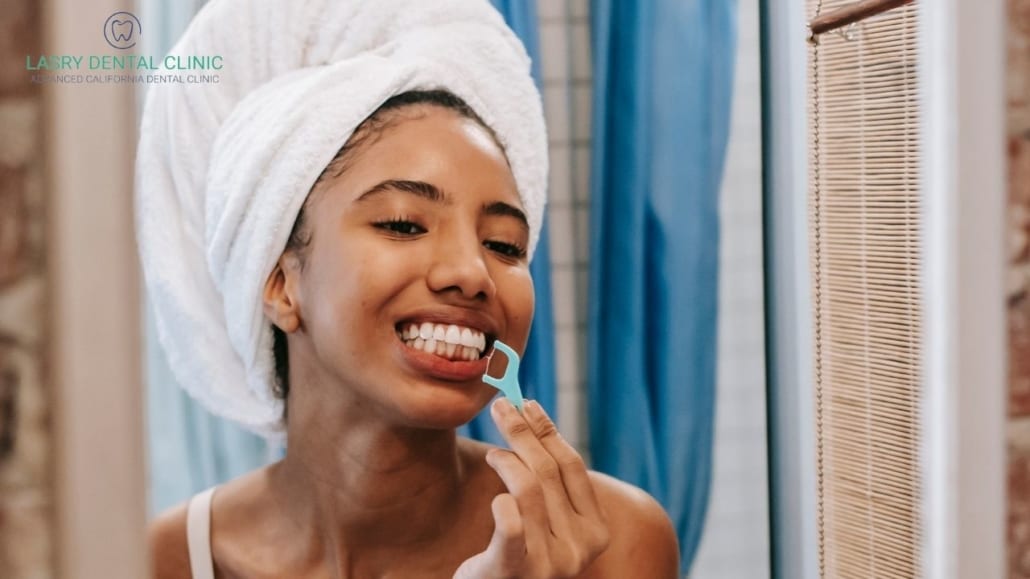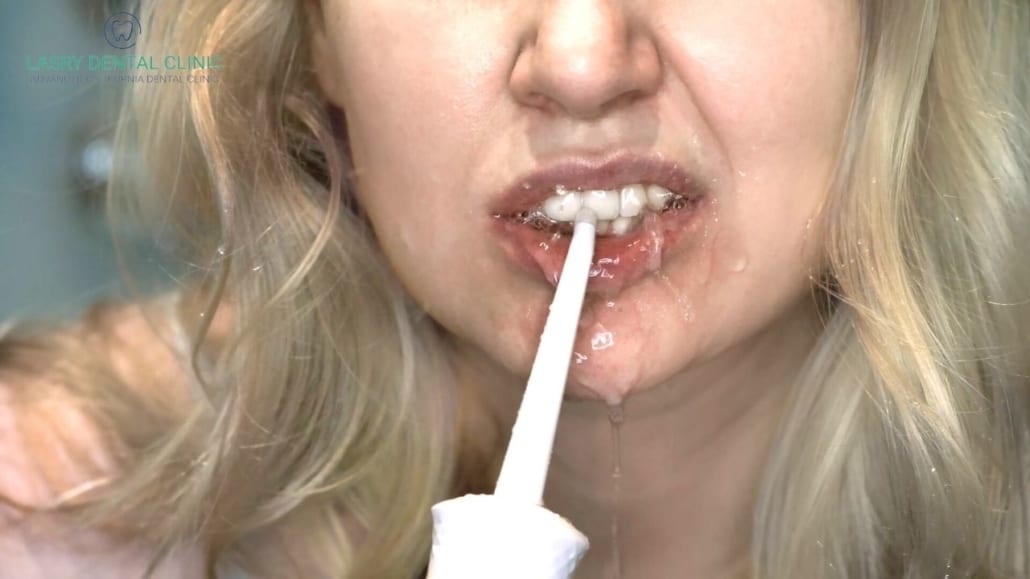Flossing vs Waterpik: Is Waterpik Better Than Floss?
Is a Waterpik better than floss? You might be surprised to find that dentists tend to disagree with the answer to that question.
However, every dentist would agree that removing dental plaque between teeth is critical to a beautiful smile and preventing tooth decay and gum disease. Whether you decide to use a Waterpik instead of, or in addition to, dental floss, learning more about both methods can help you improve your oral health.
Before we discuss the pros and cons of flossing vs Waterpik, let’s get honest about how you’re currently handling your oral health.
RELATED: LOS ANGELES DENTAL: WHAT TO EXPECT DURING THE PANDEMIC
Are You a Non-Flosser?
Alright, so we all know that flossing can be a pain. And honestly, most people are flossing the wrong way, anyway.
This is why it’s important to see your dentist twice a year. If you’re someone who hates flossing (a non-flosser, if you will) or you’re simply bad at it, your bi-annual visit can help eliminate the debris you’re missing so you won’t have future expensive teeth problems.
Naturally, the most common method for thorough oral care that dentists recommend is flossing daily. However, analysis has shown that less than one-third of the population heeds this advice. The consequence of this low number is significant because tooth brushing alone leaves almost half your mouth uncleaned.
Why do most people risk dental cavities and gum disease by not flossing? Several factors contribute to this, such as:
1. Flossing is difficult for many people.
Flossing requires considerable manual dexterity to reach all areas of your mouth. Because of the many hand positions needed for flossing, many people avoid trying it at all.
2. Flossing takes time.
The time necessary for excellent oral hygiene hinders busy people from flossing.
3. Flossing causes bleeding.
Many people give the excuse that flossing hurts and makes their gums bleed. This is only true if you have inflamed gums. After a couple of days, the discomfort and bleeding should subside.
4. Flossing is a challenging technique.
Many people find it hard to learn how to floss their entire mouth. Granted, it can be difficult to master at first. But much like anything else in life, with regular practice, you’ll have a choreographed flossing routine down pat.
RELATED: HOW TO BRUSH YOUR TEETH PROPERLY
Flossing vs Waterpik: Are The Results Really That Different?
Are Waterpik’s the easier alternative to regular flossing? Let’s talk about it.
You probably recognize the image above from the famous commercial that first brought attention to at-home Waterpiks. The commercial shows how a Waterpik can thoroughly clean in between tight crevices (like the ones we see in corn on the cob).
Since we’ve all been to the dentist at least once in our lives (right?), you’ll know that these devices were once exclusive to dentist offices. The first oral irrigator was introduced in 1962 by a Colorado dentist, which has evolved into today’s Waterpik Water flosser.
It uses a stream of pulsating water to clean between teeth. Most people consider using a Waterpik much more accessible than manual interdental cleaning with dental floss.
The popularity of Waterpiks is due to:
- Its ADA Seal of Acceptance.
- There’s a low, one-time cost of less than $75.
- It’s practical and easy to use.
But is a Waterpik better than floss?
You may become frustrated searching for the answer to this question online. Scientific research shows that oral irrigation, such as the Waterpik, is superior to string floss in reducing plaque and gingivitis. However, most dentists continue to recommend flossing before or after using a Waterpik.
RELATED: FOOD THAT IS BAD FOR YOUR TEETH
Waterpik Pros and Cons
Proper oral hygiene technique requires the use of an interdental cleaning aid because brushing cannot reach all areas between your teeth. The Waterpik Water Flosser uses water pressure to dislodge food debris and clean plaque from these difficult-to-reach areas.
But can Waterpiks replace flossing or should you use both?
We recommend the latter. Since removing plaque is essential for your oral health, you should carefully consider the pros and cons of a Waterpik and how to implement one into your oral hygiene routine.
Pros of a Waterpik Water Flosser
- Works fast to dislodge food and remove plaque between teeth.
- The handle makes it easy to use to reach all areas of your mouth.
- The Waterpik effectively removes bacteria from deep pockets around teeth.
- Delivers pulsating water pressure to clean dental bridges, implants, and braces more easily.
Cons of a Waterpik Water Flosser
- The cost of a Waterpik is more than conventional dental floss.
- You need a source of power to operate or charge your water flosser.
- You need to use one of the highest pressure settings to remove plaque. It is best to start at a low setting and gradually work your way to the higher settings to do this comfortably.
So, do Waterpiks work? Yes, the ADA states that the Waterpik Water Flosser effectively removes plaque from teeth and along the gumline.
However, the ADA doesn’t answer the question, “Is Waterpik better than flossing?” Therefore, you need to discuss the Waterpik as an alternative to flossing with your dentist. Here at Lasry Dental Clinic in Los Angeles, we highly recommend them for at-home use!
RELATED: HOW TO GET RID OF TEETH DISCOLORATION
Flossing Pros and Cons
Flossing has been essential to your overall health since the beginning of time.
Literally.
There is evidence that ancient people used pointed sticks and other devices to clean in between their teeth. However, dental floss seems to have originated in 1815 when a New Orleans dentist began recommending that his patients use silk thread to clean between their teeth. Later that century Johnson and Johnson manufactured and patented unwaxed dental floss.
By the 1970s, dentists recommended flossing as part of an effective daily oral hygiene program. Flossing remains the most common method recommended by dentists for interdental cleaning. Studies show that flossing before brushing removes plaque from between teeth.
Floss has changed dramatically since the silk thread used in 1815. Today many types of floss and floss holders are available to help make flossing easier and more effective.
Pros of Flossing
- Inexpensive
- No power source needed
- Easy to obtain
- Proven efficiency
Cons of Flossing
- Difficult to learn
- Time-consuming
- Challenging to clean some areas of the mouth
- Hard to master the technique
- Easy to cut gums
RELATED: HOW MUCH DOES A TEETH CLEANING COST?
How To Use the Waterpik Water Flosser
Now that we’ve established that Waterpiks do work and should be added to your oral routine, let’s talk strategy.
You should carefully follow the manufacturer’s instructions for the best results. However, these simple steps should help you remove plaque and keep your gums healthy:
- Use clean, warm water (not hot) to fill the plastic basin.
- Secure the reservoir to the base with firm, downward pressure.
- Select the best tip that matches your needs.
- Place the tip into the handle until you hear it click.
- If using your Waterpik for the first time, point the tip toward the sink and turn the unit on. When water flows, turn it off.
- Using the lowest pressure setting, lean over the sink.
- Close your lips around the tip and turn the unit on.
- Allow water to flow out of your mouth into the sink while you move the Waterpik around your mouth.
- Aim the Waterpik tip at your gum line and clean between each pair of teeth.
- When all areas are clean, turn the unit off.
RELATED: HOW MUCH DOES IT COST TO GO TO THE DENTIST WITHOUT INSURANCE?
Conclusion: Is Waterpik Better Than Floss?
For the 58% of people who don’t like to floss, the answer is probably yes! The ideal method may include both Waterpik and dental floss. Most dentists would agree that if you choose between water flossing and not flossing at all, then use the Waterpik and continue to see your dentist every six months for a checkup and professional teeth cleaning.









I’ m interesed in your products.
I’ m interested in your product